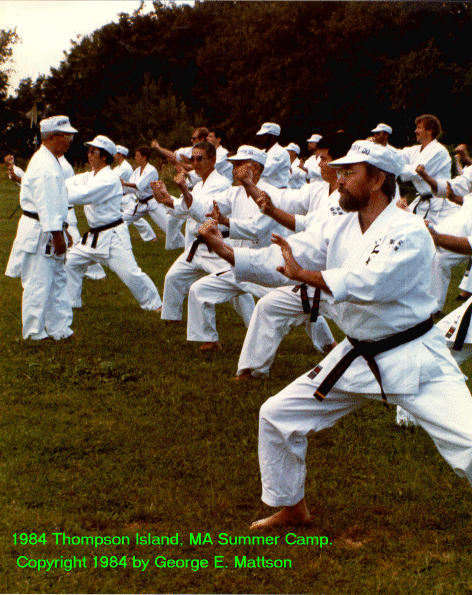Update from Darin Yee. . .
Hi George,
Can you please list on your site I will be canceling my July 11th event for children due to the time I need to spend on a couple of my kids look to get promoted at summer camp. If they want this to happen, I can’t afford to let any Saturdays go. I will still hold the August 7 adult get together. I’ve already hired a band to play.
If you have any questions, please give me a call. Thank you.
Darin
Five Weapons of Uechi-Ryu’s Hiraken Strike
 By Ethan Miller, nidan
By Ethan Miller, nidan
While testing for my shodan test in 1994 one of the questions I was asked by the test board was to name a strike that was being shown. It was the hiraken, and I was then asked to explain how it was used. After I did this, I of course wondered. What was I missing? The hiraken strike often shows up as a single or double strike to the temple area. This is convenient, because the trusted “iron arm” position also acts to deflect a strike or lift the arms of an opponent. My experience with the hand position is that it is much more versatile. In fact it seems to me to be the most composite of the strikes seen in Uechi-Ryu. I have seen the hiraken demonstrated two different ways by very senior practitioners. I call the first “flat” and the second “closed”. The flat position has a gap between the top thumb knuckle and the fingertips. The closed position has the fingertips tucked behind the thumb knuckle tightly. These two positions alter the fist shape and stress one weapon over another. In fact other styles may name the two positions differently.
Here are the five weapons for the hiraken position: 1) A strengthened but shorter ridge hand strike. 2) A strengthened but shorter knife edge hand. To me the both these positions are best used in the “flat” position. 3) A very durable percussion strike surface in the closed position with the front of the hand. 4) A stronger middle knuckle punch in the closed position and a weaker knuckle position in the flat position. 5) A “cutter” position.
Some of the applications of the strikes are easy to see, the “ridge” hand strike, (1) is effective as an attack, the arm makes a hooking motion targeting the neck area. Less intuitive is the short knife edge (2) to the neck in the following scenario: The defender gets caught in a bear hug with at least one arm free, and the adversary’s head is often lower and to the side of the arm that is intending to defend with the hiraken. The defender can attack the head and neck by actually striking as he is pulling his arm to himself. This technique would require a lot of confidence with the hiraken.
The face (3) of the hiraken position is very strong and it can be used to glance off the head in the temple area or higher. A direct strike to this area would rattle the opponent’s brains enough to create other openings. It is advantageous in a situation where one faces a helmeted opponent. Another shorter technique from a tie-up could be bringing it down on the bridge of the nose – possibly causing facial fractures.
Hiraken strikes, because of their design are good for many close in techniques, semi-grappling situations. The closed position in an uppercut mode is effective in this on the ground scenario: Many ju-jitsu practitioners when in the guard position favor pulling the adversary into them. Since I have a wrestling background I have never been that comfortable on my back for very long. However, an alternative for the practice of pulling the adversary into the guard would be to attack the floating rib area of the mounted adversary with short hiraken uppercuts, which would cause significant pain and reaction, while still allowing one to guard.
The “cutter” hiraken as I like to call it is evident when the practitioner runs the knuckles against the soft-tissue areas of the human body. The jagged knuckles are not unlike the serrations found in many fighting knives these days. This is a disrupting strike though the pain level is not always evident. It is dangerous to the neck and other areas – using this strike requires a significant level of knowledge and consistent practice.
Best wishes training,
Ethan Miller


